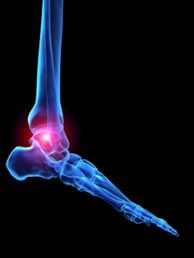
Lansdowne, PA
(610) 626-3338

Lansdowne, PA
(610) 626-3338
 Rheumatoid arthritis is known as “one of the most common autoimmune diseases in America,” affecting women more often than men. The disease is known for causing pain and swelling symptoms in the body’s joints, as the immune system begins attacking tissues in the joints. Other symptoms include stiffness, fever, fatigue, and impacted mobility. Recent research suggests that removing certain foods from your diet and adding in others can help fight against inflammation symptoms. Avoid foods high in gluten, dairy and eggs. Opt for foods with Omega-3 fatty acids, Vitamin K2, Vitamin D, and calcium.
Rheumatoid arthritis is known as “one of the most common autoimmune diseases in America,” affecting women more often than men. The disease is known for causing pain and swelling symptoms in the body’s joints, as the immune system begins attacking tissues in the joints. Other symptoms include stiffness, fever, fatigue, and impacted mobility. Recent research suggests that removing certain foods from your diet and adding in others can help fight against inflammation symptoms. Avoid foods high in gluten, dairy and eggs. Opt for foods with Omega-3 fatty acids, Vitamin K2, Vitamin D, and calcium.
Because RA affects more than just your joints, including the joints in your feet and ankles, it is important to seek early diagnosis from your podiatrist if you feel like the pain in your feet might be caused by RA. For more information, contact Dr. George Yarnell of Pennsylvania. Our doctor will treat your foot and ankle needs.
What Is Rheumatoid Arthritis?
Rheumatoid Arthritis (RA) is an autoimmune disorder in which the body’s own immune system attacks the membranes surrounding the joints. Inflammation of the lining and eventually the destruction of the joint’s cartilage and bone occur, causing severe pain and immobility.
Rheumatoid Arthritis of the Feet
Although RA usually attacks multiple bones and joints throughout the entire body, almost 90 percent of cases result in pain in the foot or ankle area.
Symptoms
- Swelling & pain in the feet
- Stiffness in the feet
- Pain on the ball or sole of feet
- Joint shift and deformation
Diagnosis
Quick diagnosis of RA in the feet is important so that the podiatrist can treat the area effectively. Your doctor will ask you about your medical history, occupation, and lifestyle to determine the origin of the condition. Rheumatoid Factor tests help to determine if someone is affected by the disease.
If you have any questions please feel free to contact our office located in Lansdowne, PA. We offer the newest diagnostic and treatment technologies for all your foot and ankle needs.
 “If you want to know the state of your health, try looking down.” Poor circulation in a person’s feet can be caused by a variety of things, and it is vitally important not to ignore any hint that this may be happening to you. Symptoms to look out for include cold feet, numbness, pain, or swelling. Diabetes can lead to poor circulation in the extremities and if left untreated, can wreak havoc on your feet. But there are many other reasons for lack of blood flow, including neurological issues, Peripheral Artery Disease (PAD), and smoking, among others. Causes of these symptoms can become serious so it is imperative get to a podiatrist immediately to find out what is going on.
“If you want to know the state of your health, try looking down.” Poor circulation in a person’s feet can be caused by a variety of things, and it is vitally important not to ignore any hint that this may be happening to you. Symptoms to look out for include cold feet, numbness, pain, or swelling. Diabetes can lead to poor circulation in the extremities and if left untreated, can wreak havoc on your feet. But there are many other reasons for lack of blood flow, including neurological issues, Peripheral Artery Disease (PAD), and smoking, among others. Causes of these symptoms can become serious so it is imperative get to a podiatrist immediately to find out what is going on.
Poor circulation is a serious condition and needs immediate medical attention. If you have any concerns with poor circulation in your feet contact Dr. George Yarnell of Pennsylvania. Our doctor will treat your foot and ankle needs.
Poor Circulation in the Feet
Poor blood circulation in the feet and legs is can be caused by peripheral artery disease (PAD), which is the result of a buildup of plaque in the arteries.
Plaque buildup or atherosclerosis results from excess calcium and cholesterol in the bloodstream. This can restrict the amount of blood which can flow through the arteries. Poor blood circulation in the feet and legs are sometimes caused by inflammation in the blood vessels, known as vasculitis.
Causes
Lack of oxygen and oxygen from poor blood circulation restricts muscle growth and development.
It can also cause:
Those who have diabetes or smoke are at greatest risk for poor circulation, as are those who are over 50. If you have poor circulation in the feet and legs it may be caused by PAD, and is important to make changes to your lifestyle in order to reduce risk of getting a heart attack or stroke. Exercise and maintaining a healthy lifestyle will dramatically improve conditions.
As always see a doctor as they will help try and fit a regime that suits you. A doctor will also prescribe you medication which will help for PAD.
If you have any questions please feel free to contact our office located in Lansdowne, PA. We offer the newest diagnostic and treatment technologies for all your foot and ankle needs.
 If you’re experiencing stiffness and pain in the soles of your feet that typically becomes more prominent during the mornings, you may have plantar fasciitis. Plantar fasciitis can be described as a foot condition that results from overuse of the plantar fascia, the tissue that runs along the soles of your feet. Excessive stress on this area can lead to inflammation. Being overweight, having flat feet or high arches, pregnancy and improper footwear such as flip flops are also factors in the development of plantar fasciitis. Treat your condition by icing your feet, stretching your muscles and having proper rest by avoiding any strenuous activity.
If you’re experiencing stiffness and pain in the soles of your feet that typically becomes more prominent during the mornings, you may have plantar fasciitis. Plantar fasciitis can be described as a foot condition that results from overuse of the plantar fascia, the tissue that runs along the soles of your feet. Excessive stress on this area can lead to inflammation. Being overweight, having flat feet or high arches, pregnancy and improper footwear such as flip flops are also factors in the development of plantar fasciitis. Treat your condition by icing your feet, stretching your muscles and having proper rest by avoiding any strenuous activity.
Plantar fasciitis can be very painful and inconvenient. If you are experiencing heel pain or symptoms of plantar fasciitis, contact Dr. George Yarnell of Pennsylvania. Our doctor will treat your foot and ankle needs.
What is Plantar Fasciitis?
Plantar fasciitis is the inflammation of the thick band of tissue that runs along the bottom of your foot, known as the plantar fascia, and causes mild to severe heel pain.
What Causes Plantar Fasciitis?
· Excessive running
· Non-supportive shoes
· Overpronation
· Repeated stretching and tearing of the plantar fascia
How Can It Be Treated?
· Conservative measures – anti-inflammatories, ice packs, stretching exercises, physical therapy, orthotic devices
· Shockwave therapy – sound waves are sent to the affected area to facilitate healing and are usually used for chronic cases of plantar fasciitis
· Surgery – usually only used as a last resort when all else fails. The plantar fascia can be surgically detached from the heel
While very treatable, plantar fasciitis is definitely not something that should be ignored. Especially in severe cases, speaking to your doctor right away is highly recommended to avoid complications and severe heel pain. Your podiatrist can work with you to provide the appropriate treatment options tailored to your condition.
If you have any questions please feel free to contact our office located in Lansdowne, PA. We offer the newest diagnostic and treatment technologies for all your foot and ankle needs.
 Before buying shoes online, make sure to go in person to have the shoes fitted properly. Finding the right shoes includes taking into consideration the correct length and width of your feet. Our feet are prone to growing wider as we age, especially as we spend more time walking and standing. If you like a specific shoe brand and prefer to shop online, it is recommended to choose shoes directly from the brand’s website. However, having your feet fitted in person, particularly with a specialist, can determine the best fit for your feet.
Before buying shoes online, make sure to go in person to have the shoes fitted properly. Finding the right shoes includes taking into consideration the correct length and width of your feet. Our feet are prone to growing wider as we age, especially as we spend more time walking and standing. If you like a specific shoe brand and prefer to shop online, it is recommended to choose shoes directly from the brand’s website. However, having your feet fitted in person, particularly with a specialist, can determine the best fit for your feet.
If you are a runner, wearing the right running shoe is essential. For more information, contact Dr. George Yarnell of Pennsylvania. Our doctor will treat your foot and ankle needs.
Choosing the Right Running Shoe for Your Foot Type
To increase performance and avoid the risk of injury, it is important to choose the right running shoe based on your foot type. The general design of running shoes revolves around pronation, which is how the ankle rolls from outside to inside when the foot strikes the ground.
If you have any questions please feel free to contact our office located in Lansdowne, PA. We offer the newest diagnostic and treatment technologies for all your foot and ankle needs.